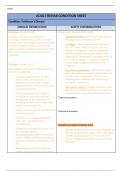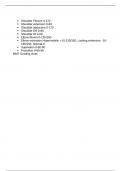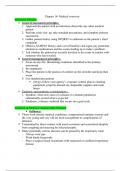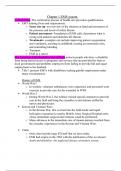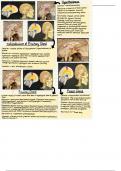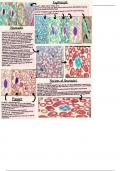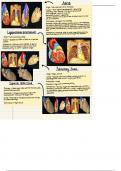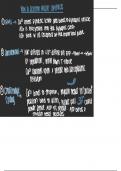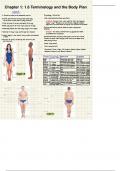Massachuetts College Of Pharmacy & Health Sciences
Latest uploads at Massachuetts College Of Pharmacy & Health Sciences. Looking for notes at Massachuetts College Of Pharmacy & Health Sciences? We have lots of notes, study guides and study notes available for your school.
-
130
-
1
-
13
All courses for Massachuetts College Of Pharmacy & Health Sciences
Latest notes & summaries Massachuetts College Of Pharmacy & Health Sciences
Condition sheet providing in-depth information on Parkinson's disease
Motor exam review for final
Summarized medsurg final exam content. Includes cardiac, immunity, respiratory, neuro, and endocrine. Includes textbook notes and photos. Covers overview of topic, pathophysiology review, diagnostics, causes, signs and symptoms, and nursing interventions.
Providing an in depth look on EMT course for MASS.
Theses documents are an in depth dive into the chapters for EMT school.
The endocrine system is a complex network of glands and organs that secrete hormones, chemical messengers, into the bloodstream to regulate various physiological functions and maintain homeostasis within the body. These hormones influence the activities of target cells and organs, coordinating processes such as growth and development, metabolism, immune function, and reproductive function. Key components of the endocrine system include: Hypothalamus: Located in the brain, the hypothalamus ...
Histology is the branch of biology that involves the study of the microscopic structure of tissues and organs. It is also known as microscopic anatomy. Histology aims to understand the organization and composition of cells, tissues, and organs at the cellular and subcellular levels. This field plays a crucial role in medical and biological research, as it helps to elucidate the structure-function relationships in living organisms. Key aspects of histology include: Microscopic Examination: ...
The heart is a muscular organ that plays a crucial role in the circulatory system, responsible for pumping blood throughout the body. Located in the chest, slightly to the left, the heart is enclosed within the pericardium—a double-walled sac. Its primary function is to ensure a continuous flow of oxygenated blood to all tissues and organs while simultaneously removing deoxygenated blood and waste products. Key features and components of the heart include: Muscular Structure: The heart i...
How a skeleton contracts, Three ways to generate ATP, Lactate formation, oxygen debt, muscle twitch/tone/fatigue, cardiac muscles, Nerve functions- sensory nervous system and the motor nervous system explained. Layers of the nerve. Neurons functions and its body parts. Neurons transport/synapse. Glial cells in the PNS and CNS and their job. Axon regeneration, Myelination. Description of leaks, channels, pumps and when they are used during the neuron in the plasma membrane. Resting membrane poten...
Summary of the terminology of the body plane

